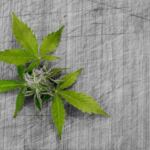- Like
- SHARE
- Digg
- Del
- Tumblr
- VKontakte
- Flattr
- Buffer
- Love This
- Save
- Odnoklassniki
- Meneame
- Blogger
- Amazon
- Yahoo Mail
- Gmail
- AOL
- Newsvine
- HackerNews
- Evernote
- MySpace
- Mail.ru
- Viadeo
- Line
- Comments
- Yummly
- SMS
- Viber
- Telegram
- JOIN
- Skype
- Facebook Messenger
- Kakao
- LiveJournal
- Yammer
- Edgar
- Fintel
- Mix
- Instapaper
- Copy Link
Introduction
Cannabidiol is one of the two most popular compounds extracted from the cannabis plant and is well known for its many health benefits.
CBD, as it is commonly known, is different from its cannabinoid cousin THC in that it does not contain intoxicating psychoactive properties.
This potent plant medicine works by interacting with various parts of the body, including the endocannabinoid system, which plays a role in everything from sleep cycles and stress response to pain management and the immune system.
Its popularity has grown following hundreds of clinical studies that show it is highly effective in helping to aid those suffering from stress, anxiety, mood imbalance, gut discomfort, inflammation, and pain.
While it spent years in the shadows, CBD and other hemp extracts are now legal in the United States and can be purchased in a variety of product types.
How Are CBD Products Made?
The answer is fairly straightforward, but there are several processes involved, especially within the new regulatory structure put into pace by the 2018 Farm Bill. Let’s dive in…
Where Does CBD Come From?
Cannabidiol is a compound known as a cannabinoid. It is commonly found in cannabis hemp plants, along with over one hundred other cannabinoid compounds.
CBD is extracted out of the cannabis plant. Let’s now take a look at how this is done.
How is CBD Extracted From Cannabis?
There are a number of ways to get CBD out of the cannabis plant. The most popular of these methods include CO2 extraction, ethanol extraction ,and hydrocarbon extraction.
1. CO2 Extraction
The CO2 method, often called Supercritical CO2 extraction, uses carbon dioxide at high temperatures and pressure to dissolve ground plant material. This material then flows into other chambers within the extraction machine, where it is separated, leaving behind target compounds like CBD.
2. Ethanol Extraction
Ethanol extraction is quite different from CO2, in that it does not require supercritical temperature and pressure to remove essential compounds from the hemp plant material. Instead, it uses alcohol (ethanol), to separate cannabinoids, terpenes and other compounds from the cannabis biomass material. This method of extraction has been used for thousands of years for herbal tinctures because it does not destroy the essential compounds of the plant.
3. Hydrocarbon Extraction
Hydrocarbon extraction, while still in use today, is being replaced with the other two methods because it utilizes dangerous solvents for the extraction process. Though the solvents are removed later in the process, many manufacturers have opted for chemical-free extraction methods.
Once extracted, the raw materials containing compounds like CBD, THC, CBN, CBG, CBC, terpenes, lipids, flavonoids, and plant materials like chlorophyll are further processed to make them viable as a base material for the production of a number of popular products.
But before we can make CBD oil, gummies or topicals, this raw material needs to be refined.
Over the last several years, new innovations in extraction technology have made it possible for product manufacturers to develop highly potent CBD products known as concentrates.
These concentrates can come in several forms, two of the most popular being distillates and isolates.
What is a Distillate?
A distillate is a highly refined extract made from the raw material that has been removed from the cannabis plant via the initial CO2, ethanol, or hydrocarbon extraction process.
Distillate can have a concentration of cannabidiol that ranges between 70% and 90%, making it one of the most potent CBD products available. Extracts like Cannabiva full spectrum CBD distillate contain not just cannabidiol, but a host of other highly beneficial compounds that include cannabinol, cannabigerol, cannabichromene, terpenes, and flavonoids.
In its raw form, a distillate is viscous and resembles golden honey when warmed. Due to its high concentration of CBD, it may crystallize over time into a harder substance at room temperature.
CBD distillate is usually the base extract used to manufacture products like full spectrum or broad spectrum CBD oils, skincare topicals, vapes, and pet products like dog CBD oil.
What is an Isolate?
Isolates are considered to be the purest form of a particular compound.
While distillates contain a number of hemp phytochemicals like CBD, CBG, CBN and terpenes, an isolate is a type of concentrated material that has “isolated” one specific compound.
This is accomplished by taking a raw concentrate like a distillate and using an advanced process known as chromatography to separate individual components from a mixture.
In the case of hemp extracts being isolated, this results in a highly crystalline CBD powder that is made up of over 99% cannabidiol.
Isolates can be used to manufacture CBD oils, edibles, topical skincare creams, and just about any other kind of CBD product you can think of.
Because they are pure CBD and devoid of compounds like THC, they are often the preferred choice for base materials used in THC-free CBD products. They are also easy to blend, so are often used by individual consumers who wish to infuse their own products with CBD.
How Does the CBD Product Manufacturing Process Work?
While there are a number of different methods for extraction, distillation, isolation, and the production of other raw materials containing CBD, most manufacturers create their CBD products from distillates and isolates similar to what has been described here.
These base materials are easy to use when calculating necessary amounts of cannabidiol and when performing the blending process.
Distillates and isolates can be used to manufacture almost any type of CBD products, including ingestibles like CBD oils, gummies, and softgel capsules, as well as topicals like creams, balms, and moisturizers.
The Takeaway
With the legalization of CBD and other hemp extracts, various extraction methods, such as CO2 extraction, ethanol extraction, and hydrocarbon extraction, are utilized to obtain CBD from the cannabis plant.
The raw materials are further refined into concentrates like distillates and isolates, which serve as the base for manufacturing a wide range of CBD products.
Distillates, known for their high potency, are used in oils, topicals, and other popular products, while isolates offer pure CBD for THC-free formulations.
These base materials, in the form of distillates and isolates, are then blended and utilized in the production of ingestible and topical CBD products.
As CBD continues to grow in popularity, manufacturers rely on these refined extracts to create high-quality CBD products that offer potential benefits for consumers.


